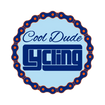If you thought cycling was all about Lycra and quiet determination, Mario Cipollini is here to prove you wrong. Known as “Super Mario” or “The Lion King,” this Italian sprinting legend turned the sport into a catwalk with his flamboyant style and outrageous antics. Born on March 22, 1967, in Lucca, Tuscany, Cipollini racked up an astonishing 42 stage wins at the Giro d’Italia, a 2002 World Championship title, and a reputation for dazzling both on and off the bike. But nothing encapsulates his larger-than-life persona like the infamous 1999 Giro d’Italia muscle suit madness—a moment that sparked laughter, outrage, and a rulebook rewrite. This article dives into his sprinting brilliance, that wild wardrobe choice, and the off-bike charm that made him cycling’s ultimate showman.
From Tuscan Roots to Sprinting Stardom
Mario Cipollini grew up in the rolling hills of Tuscany, where his love for speed and style took root early. As a kid, he pedaled around Lucca, dreaming of glory, and by his teens, he was racing locally with a flair that turned heads. Turning pro in 1989 with Del Tongo, he quickly showed his sprinting chops, winning stages at the Tour de Suisse and Giro del Trentino. But it was his 1993 Giro d’Italia debut with Mercatone Uno that launched him into the spotlight—five stage wins, including a stunning Milan finish, announced the arrival of a new king.
Cipollini wasn’t your average rider. With his flowing blonde locks, chiseled jaw, and penchant for flashy kits, he brought Hollywood vibes to the peloton. His early career with Saeco in the mid-90s saw him dominate sprints, winning the points classification at the 1997 Giro with five stages. His secret? A mix of raw power, tactical genius, and an ego that filled the race radio. Fans adored his confidence, and rivals learned to brace for his explosive finishes, setting the stage for a career that would blend athletic prowess with pure theater.
The Muscle Suit Madness of 1999
The 1999 Giro d’Italia will forever be remembered for one bizarre moment: Cipollini rolling up to the start line in a skin-tight bodysuit printed with exaggerated, rippling muscles. It was May 20, Stage 12 in Catania, and the Lion King decided to flex—literally—by wearing this outrageous outfit designed to mock his critics and flaunt his physique. The crowd erupted in laughter, photographers clicked furiously, and the media went wild. Cipollini, ever the showman, grinned and posed, turning a routine stage into a circus.

The stunt wasn’t just for laughs. He’d been feuding with UCI officials over kit regulations, and this was his middle finger to the rulebook. The suit, a collaboration with his sponsor, pushed boundaries with its bold design, amplifying his already larger-than-life image. But the UCI wasn’t amused. Within hours, they banned the getup, citing safety and uniformity rules, and fined him. Cipollini shrugged it off, quipping, “If they don’t like my muscles, they should look away!” He still won the stage, proving the distraction only fueled his fire.
That moment defined his rebellious streak. The late 90s cycling scene, shadowed by doping scandals and a push for professionalism, needed a jolt of personality, and Cipollini delivered. The muscle suit became a symbol of his defiance, a nostalgic nod to an era where riders could bend norms, contrasting sharply with today’s tightly controlled sport.
Dominating the Giro and Beyond
Cipollini’s sprinting record is the stuff of legend. His 42 Giro stage wins—more than any other rider—came across multiple tours, with standout years like 1999 (six stages) and 2003 (four stages in his final Giro). His Milan finishes were theatrical masterpieces, often featuring victory salutes or kisses blown to the crowd. He also claimed 12 Tour de France stages, though his focus remained the Giro, where he won the points jersey five times (1992-1993, 1995-1997).

Beyond the Grand Tours, he conquered classics like Milan-San Remo in 2002, a 294km sprint duel he won at 35, proving age was just a number. That year, he added the World Road Race Championship in Zolder, Belgium, outsprinting the field in a rainbow jersey-earning triumph. His palmarès boasts 189 victories, a testament to his consistency and flair. Whether charging through peloton chaos or celebrating with a lion’s roar, Cipollini made every win a spectacle.
His style was as much about strategy as swagger. He’d position himself perfectly, using teammates as shields before unleashing a final burst. Rivals like Erik Zabel and Robbie McEwen knew the drill: if Cipollini was in form, the line was his. His 1999 Giro, despite the muscle suit drama, saw him take the points jersey again, a fitting crown for a rider who turned sprints into art.
Off-Bike Antics and Charismatic Charm
Off the bike, Cipollini was a magnet for headlines. His love life was tabloid gold—marriages to models and a string of high-profile romances kept fans gossiping. He once arrived at the 1997 Giro prologue with his then-wife, dressed as a Roman emperor and empress, complete with a chariot escort. The crowd ate it up, and the photos went viral in an pre-internet age.

His charisma shone in interviews. Asked about the muscle suit, he laughed, “I wanted to show them real strength!” He posed for calendars in the nude (strategically posed, of course), raising eyebrows but boosting his brand. His modeling gigs with Dolce & Gabbana and endorsement deals with Bianchi bikes turned him into a cycling pin-up. Fans recall him signing autographs with a wink, often flanked by adoring tifosi waving Italian flags.
One quirky tale: during the 2002 Worlds, he reportedly serenaded the crowd with an impromptu opera tune post-victory, blending his Tuscan roots with his flair. Another time, he gifted a stage winner’s bouquet to a fan in the stands, charming her into tears. These moments painted him as a rider who lived large, blending machismo with a soft heart.
The Lion King’s Legacy
Cipollini’s later years saw him with teams like Acqua & Sapone, but injuries and a 2008 retirement loomed. His final Giro stage win in 2003, at 36, was a tearful farewell, with fans chanting his name. Post-retirement, he launched a clothing line and dabbled in politics, running for mayor of Lucca in 2019 (unsuccessfully). His legacy, though, is cemented in cycling lore.
The muscle suit incident remains a fan favorite, a quirky footnote in a career of brilliance. Social media buzzes with clips of that Catania start, with comments like “Cipo made cycling fun!” His 42 Giro wins still stand as a record, and his World title adds gravitas to the glamour. In a sport now dominated by data and drones, Cipollini’s throwback style—bold, brash, and unapologetic—feels like a breath of fresh air.
From Tuscan backroads to global stages, Mario Cipollini didn’t just race—he performed. The Lion King’s roar echoes through cycling history, a reminder that sometimes, the wildest riders leave the deepest mark. Whether it was muscles on fabric or muscles in motion, Cipo proved style and speed could coexist, turning every sprint into a story worth telling.







